- All the latest news, data, and market intelligence across MENA at your fingerprints
- First-hand updates and inside information on projects, clients and competitors that matter to you
- 20 years' archive of information, data, and news for you to access at your convenience
- Strategize to succeed and minimise risks with timely analysis of current and future market trends
Latest News
-
 Saudi Arabia to award 10.9GW of generation capacity
Saudi Arabia to award 10.9GW of generation capacity21 October 2024

Principal buyer Saudi Power Procurement Company (SPPC) is expected to award the contracts to develop four gas-fired power plants and four solar photovoltaic (PV) projects over the next few weeks.
MEED understands the intention is to announce the preferred and reserved bidders for each of the contracts, possibly by late October or early November.
SPPC received six proposals from companies for the contracts to develop and operate four solar PV independent power producer (IPP) projects, which have a total combined capacity of 3,700MW, in August.
The project contracts were tendered under the fifth procurement round of the kingdom's National Renewable Energy Programme (NREP).
According to industry sources, the companies that submitted bids for the four PV contracts include:
- EDF Renewables (France) / Etihad Water & Electricity (UAE) / SPIC Huanghe Hydropower Development (China)
- Masdar (UAE) / Nesma Renewable Energy (local) / Korea Electric Power Corporation (South Korea)
- Jinko Power (Hong Kong) / Saudi Electricity Company (local)
- Aljomaih Energy & Water (Jenwa, local) / Total Energies Renewables (France)
- Engie / Kahrabel (France/ UAE)
- Alfanar Company (local)
The following solar PV projects and their capacities make up round five of the NREP:
- Al-Sadawi solar IPP (Eastern Province): 2,000MW
- Al-Mas solar IPP (Hail): 1,000MW
- Al-Hinakiyah 2 solar IPP (Medina): 400MW
- Rabigh 2 solar IPP (Mecca): 300MW
Meanwhile, SPPC received bids on 21 August for the contracts to develop and operate four combined-cycle gas turbine (CCGT) power generation plants in Saudi Arabia with a total combined capacity of 7,200MW.
The four IPP projects, each with a generation capacity of 1,800MW, are:
- Remah 1
- Remah 2
- Al-Nairiyah 1
- Al-Nairiyah 2
Remah 1 and 2, previously known as PP15, will be located in Saudi Arabia’s Central Region, while Al-Nairiyah 1 and 2 will be in the Eastern Region.
According to sources close to the projects, the teams that submitted bids to develop and operate the two CCGT IPPs are:
- Abu Dhabi National Energy Company (Taqa, UAE) / Jera (Japan)
- Acwa Power (local) / Korea Electric Power Corporation (South Korea) / Saudi Electricity Company (local).
https://image.digitalinsightresearch.in/uploads/NewsArticle/12767412/main1232.jpg -
 Khazna expects to build more 100MW-scale data centres
Khazna expects to build more 100MW-scale data centres21 October 2024

Register for MEED's 14-day trial access
The 100MW artificial intelligence (AI)-enhanced data centre being built in the UAE's northern emirate of Ajman is not the last for UAE-based data centre and cloud services provider Khazna Data Centres.
"In the near future, we will be announcing other projects on the same scale or larger than the Ajman data centre," Gregory Jasmin, the firm's senior director of business development strategy, tells MEED.
The executive says the 100MW data centre, once completed, makes Khazna Data Centres "by far the largest data centre developer and operator in the entire Gulf region".
MEED previously reported that London-headquartered construction firm Laing O'Rourke had started construction on Khazna's latest data centre project in Ajman.
The new facility is expected to cost about AED1bn ($272m) and be completed within 15 months. Etihad Water & Electricity Company will supply power to the Ajman data centre.
Jasmin says the company exceeded its capacity target of 300MW by the end of 2023, up from 126MW in early 2022.
The firm has grown significantly since 2020, when it had a capacity of just 40MW, following the 2021 merger of the data centre divisions of Khazna’s parent firm G42 and telecommunications firm e&, previously known as Etisalat.
The company is also expanding its presence in other markets, including Saudi Arabia, Egypt and Kenya.
"By the end of this year and the start of Q1 next year, we will be in many [more] geographies," says Jasmin.
Asked about the top driver for the company's future expansion, the executive says: "AI, AI and more AI."
He adds: "This is based on what the [UAE] leadership wants, which is to have the UAE at the forefront of the AI revolution and with G42, we sit at the core of the infrastructure that is needed for AI.
"For many years, we were always looking to the West to see what we can do, but now we want to take the lead in building the infrastructure that is powering AI here in the UAE as well as globally," says Jasmin.
As things stand, the government's AI push has increased interest in building data centre capacity, if not changed the landscape entirely for Khazna.
In June 2022, the firm's CEO Hassan Al-Naqbi told MEED that increased digitalisation by government entities and enterprises, as well as the adoption of school- and work-from-home practices, mean that the Middle East region will continue to drive double-digit growth in demand for data centre services.
In addition, the general mandate for regional governments to retain data within their national jurisdictions is also a major driver for the growth of data centre services in the region, which was nearly double the global average at the time.
Green data centre
Known for being a major energy consumer, there is a growing awareness of how data centres can be made more sustainable or greener, particularly due to the cooling requirements, which are especially crucial in the Gulf region.
Jasmin says in some countries, such as Kenya, a 100% renewable energy powered data centre is now feasible.
Khazna's facility in Kenya is powered by 100% renewable geothermal energy and can go from a scale of 100MW up to 1GW, because "we are located in a green energy park that is fed by renewable energy currently at 900MW, but with the potential to grow to up to 10GW".
Related reads:
https://image.digitalinsightresearch.in/uploads/NewsArticle/12767183/main.gif -
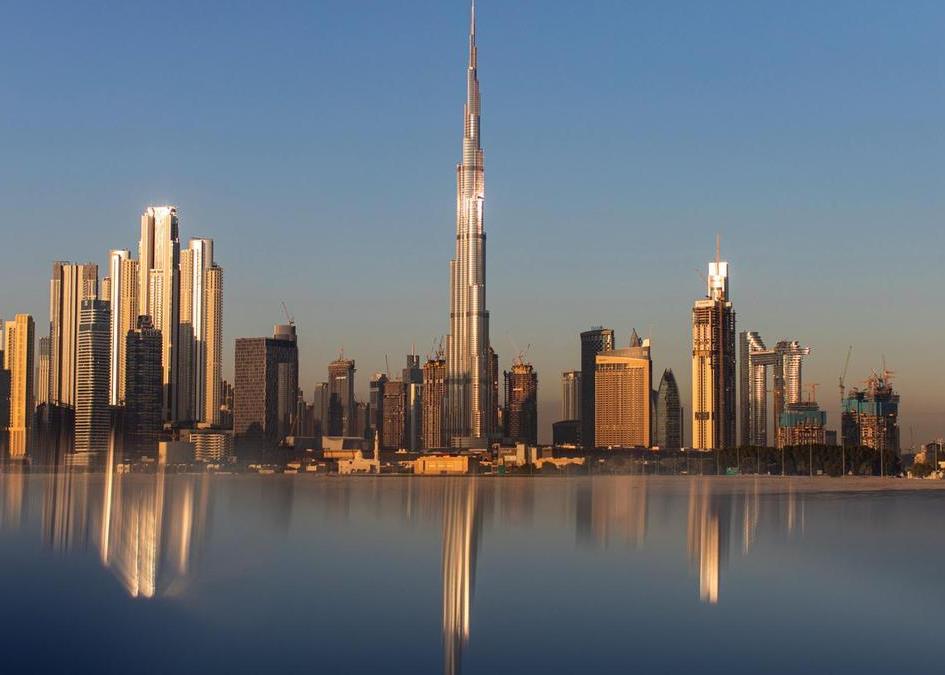 Dubai Municipality seeks Tasreef partner
Dubai Municipality seeks Tasreef partner18 October 2024
Register for MEED's 14-day trial access
Dubai Municipality has issued a tender notice for a delivery partner to develop and implement a model tailored to the needs of the Tasreef programme, Dubai's planned AED30bn ($8.16bn) rainwater drainage network project.
MEED understands that the request for proposals targets technical and engineering advisory companies.
Dubai Municipality expects to receive bids by 7 November, Fahad Al-Awadhi, director of drainage system and recycled water projects department, Dubai Municipality, said in a recent social media post.
According to Al-Awadhi, the Tasreef programme consists of three streamlines to enhance the effectiveness of Dubai's stormwater system:
- Improvement of infiltration and sustainable drainage systems and artificial intelligence (AI) applications
- Upgrade of stormwater systems in Deira, Bur Dubai and Jebel Ali
- Proposed stormwater tunnels in Deira and Bur Dubai, as well as link tunnels in Jebel Ali
In addition, the Tasreef programme will address storm event management, including raising awareness about storm impacts, implementing proactive risk control measures, developing marketing and procurement strategies and establishing communication plans.
Al-Awadhi added: "The proposed stormwater tunnels, links and terminal pump stations aim to enhance the stormwater network’s capacity by 700% to handle up to 65 millimetres of rainfall per day. This programme represents the largest rainwater collection project in a single system within the region."
An early study is under way for Tasreef, which Sheikh Mohammed Bin Rashid Al-Maktoum, UAE Vice President and Prime Minister and Ruler of Dubai, approved in June.
A source familiar with the project said that Dubai Municipality is inclined to consider a public-private partnership (PPP) procurement model for the project.
Sheikh Mohammed's approval of Tasreef came two months after a storm in April inundated Dubai, causing widespread flooding and damage to infrastructure and property in certain areas.
The project will raise the emirate-wide drainage network’s capacity to more than 20 million cubic metres of water a day. It is hoped that it will meet Dubai's needs for the next 100 years.
The project is a continuation of drainage projects launched by Dubai in 2019, covering the Expo Dubai area, Al-Maktoum International Airport City and Jebel Ali.
The rainwater drainage capacity through tunnels will reach 20 million cubic metres a day, with a flow capacity of 230 cubic metres a second.
According to data from regional projects tracker MEED Projects, the Dubai Municipality Deep Tunnel Storm Water System (DTSWS) was first announced in 2014.
It has several components, and the first two packages covering Jebel Ali were awarded in 2017 and 2018 and completed in 2022.
The remaining packages of the master plan were on hold before the government's announcement on 24 June.
The DTSWS project is separate from the Dubai Strategic Sewage Tunnels project, which is being developed under a PPP contracting model.
https://image.digitalinsightresearch.in/uploads/NewsArticle/12753886/main.jpg -
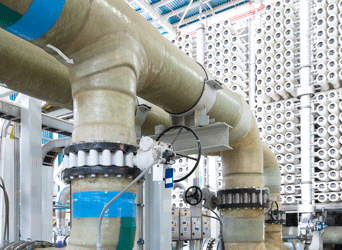 Saudi Arabia picks Ras Mohaisen preferred bidder
Saudi Arabia picks Ras Mohaisen preferred bidder18 October 2024
A team comprising the local firms Acwa Power, Haji Abdullah Alireza & Partners Company and AlKifah Holding has emerged as the preferred bidder for a contract to develop the Ras Mohaisen independent water project (IWP) in Saudi Arabia.
The state water offtaker received two bids for the contract in April this year.
The only other company that submitted a proposal for the contract, Spain’s Acciona, is the reserved bidder, according to Saudi Water Partnership Company (SWPC).
The Ras Mohaisen IWP will have the capacity to treat 300,000 cubic metres of seawater a day (cm/d) using reverse osmosis technology.
It will also include storage tanks with a capacity of 600,000 cubic metres, equivalent to two operating days, and an electrical substation.
The project is expected to reach commercial operation by the second quarter of 2028.
It is initially expected that the SWRO plant will reach commercial operation by the third quarter of 2026.
Ras Mohaisen is about 300 kilometres south of Mecca, on the Red Sea coast in Saudi Arabia’s Western Region.
SWPC has appointed Netherlands-headquartered KPMG as the financial adviser, with UK-based Eversheds Sutherland acting as the legal adviser for the project.
https://image.digitalinsightresearch.in/uploads/NewsArticle/12753083/main.gif -
 Construction begins on Khazna data centre in Ajman
Construction begins on Khazna data centre in Ajman18 October 2024

Register for MEED's 14-day trial access
London-headquartered construction firm Laing O'Rourke has started the construction works on a new data centre in Ajman, UAE.
The project is being developed by UAE-based data centre and cloud services provider Khazna Data Centres.
The project was unveiled on the sidelines of the Gitex Global 2024 event in Dubai earlier this week.
The facility will be the country's largest artificial intelligence (AI)-enhanced data centre, with an expected capacity of 100MW.
Local firm Proarc Architects & Engineering Consultants is the architect of record.
The new facility is expected to cost about AED1bn ($272m) and be completed within 15 months.
The project will cover an area of 100,000 square metres (sq m) and will include 20 data halls, each with a capacity of 5MW.
According to an official statement: "The new Tier 3 data centre will be the first AI data centre of its kind in the region, underscoring the country’s significant efforts to meet the growing demand for energy in the age of AI, which the International Energy Agency expects to double by 2026."
Etihad Water & Electricity Company (Ewec) will supply power to the Ajman data centre.
Khazna and another data centre and cloud computing provider, Injazat, both owned by Abu Dhabi-based sovereign investment firm Mubadala, became part of Abu Dhabi AI company Group 42 (G42) in 2020 as a result of Mubadala acquiring a minority stake in the AI firm.
Both firms started as data centre service providers before expanding their services to include cloud and cyber security.
In 2021, G42 signed a binding agreement with Abu Dhabi-headquartered Etisalat Group to merge their data centres.
https://image.digitalinsightresearch.in/uploads/NewsArticle/12752492/main.jpg -
 Chinese and Saudi partners set up Hithium Manat
Chinese and Saudi partners set up Hithium Manat17 October 2024
Register for MEED's 14-day trial access
Chinese energy storage solutions firm Hithium Energy Storage Technology Company (Hithium) and the local Nabilah AlTunisi have formed a joint venture that will manufacture battery energy storage systems (bess) in Saudi Arabia.
The joint venture is called Hithium Manat. The planned manufacturing facility has an annual production capacity target of 5 gigawatt-hours (GWh), according to an official statement.
Hithium launched energy storage solutions designed for the region's harsh environment during a solar and storage conference held in Riyadh.
According to Hithium, "These systems feature advanced sandstorm protection and robust high and low-temperature designs, supporting ultra-long discharge cycles of 12+ hours."
It added that the new product line is "customised to meet the unique demands of the Middle East and Africa region".
Nabilah AlTunisi is the founder and owner of Hithium Manat's local partner.
"This strategic alliance will not only provide access to world-class energy storage technology but also generate local employment opportunities, stimulate technological innovation and actively contribute to realising the kingdom's Vision 2030 objectives," AlTunisi said.
Battery energy storage market
In August, National Grid Saudi Arabia, a subsidiary of state utility Saudi Electricity Company, awarded the engineering, procurement and construction (EPC) contracts for three energy storage systems to Riyadh-based investment group Algihaz Holding. The estimated $800m projects are located in Najran, Madaya and Khamis Mushait.
National Grid also recently tendered contracts for the construction of five battery energy storage systems with a total combined capacity of 2,500MW across the kingdom.
The planned facilities, each with a capacity of 500MW or roughly 2,000 megawatt-hours, are located in or within proximity of the following key cities and load centres:
- Riyadh
- Qaisumah
- Dawadmi
- Al-Jouf
- Rabigh
Every utility in the region is procuring or planning to procure bess capacity in light of growing intermittent renewable power in their grids.
The overall capacity of deployed bess globally is expected to reach 127GW by 2027, up from an estimated cumulative deployment of 36.7GW at the end of 2023, a GlobalData report issued in June said.
The report cited Chinese companies BYD and CATL and South Korean companies LG Energy Solutions and Samsung SDI among the top battery technology providers globally.
Related read: Battery storage gains foothold
https://image.digitalinsightresearch.in/uploads/NewsArticle/12742375/main.jpg -
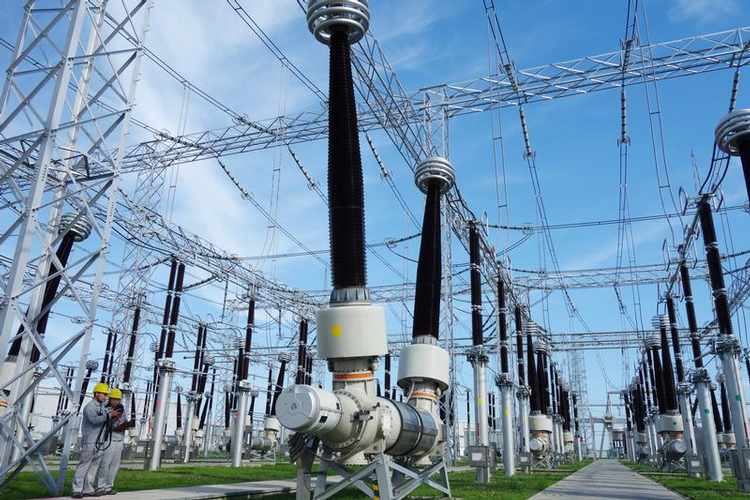 Kahramaa invites Ras Laffan substation bids
Kahramaa invites Ras Laffan substation bids17 October 2024
Qatar state utility General Electricity & Water Corporation (Kahramaa) has tendered a contract to upgrade the Ras Laffan C substation.
The scope of work covers the upgrade of existing 220-kilovolt (kV) and 400kV substations and the addition of 220kV gas-insulated switchgear bays and an 800-megavolt amps transformer.
Kahramaa issued the tender on 15 October and expects to receive bids by 28 November.
The project bid bond is valued at QR1.5m ($410,000).
Separately, Kahramaa invited firms to submit their proposals for a contract to supply and install power transmission and distribution equipment, including providing and connecting substation main earth and equipment earthing, commissioning fitted substations and pre-commissioning protection testing for 11kV switchgear panels.
Kahramaa expects to receive bids for this contract, with a bid bond of QR3m, by 14 November.
Kahramaa is expanding its power generation capacity. Negotiations are under way with the sole bidder led by Japan's Sumitomo Corporation for a contract to develop and operate Qatar’s Facility E independent water and power producer (IWPP) project.
The Facility E IWPP scheme will have a power generation capacity of 2,300MW and a water desalination capacity of 100 million imperial gallons a day.
Earlier this month, Qatar Electricity & Water Company announced plans to develop a 500MW peak power unit in Qatar's Ras Abu Fontas area.
Construction is also under way for two solar farms with a total combined capacity of 875MW in Mesaieed and Ras Laffan.
https://image.digitalinsightresearch.in/uploads/NewsArticle/12742343/main.jpg -
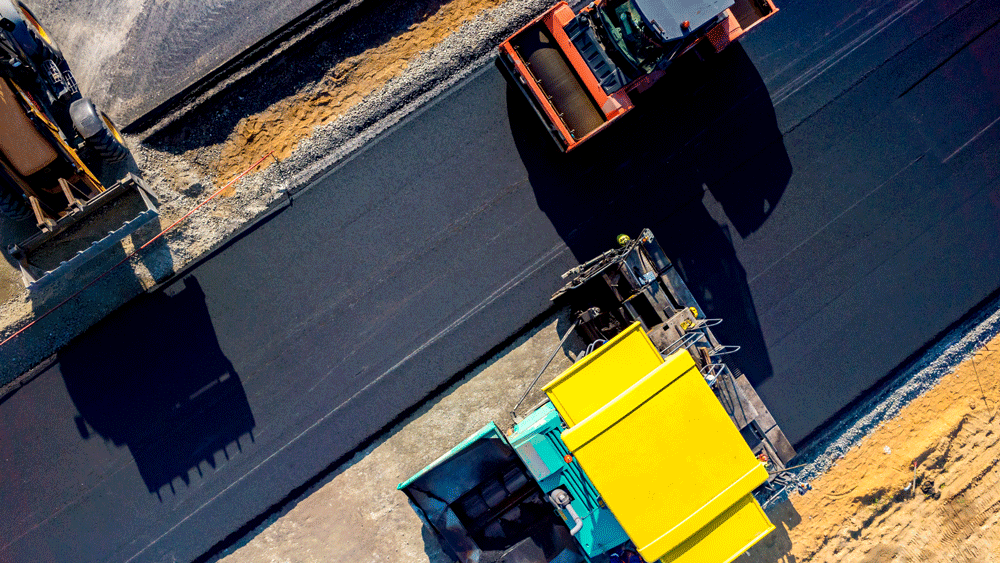 Neom starts Tabuk highway prequalifications
Neom starts Tabuk highway prequalifications17 October 2024

Saudi Arabian gigaproject developer Neom expects firms to submit their prequalification applications for a project to build a mountain road near Tabuk later this month.
The 11.5-kilometre (km) Tabuk mountain road project comprises a 4km tunnel and 7.5km dualisation of an existing road, according to an industry source.
Neom expects to receive statements of qualifications from interested engineering, procurement and construction contractors by 29 October.
The tender proceedings for Neom's transport infrastructure projects are gathering momentum.
Neom received expressions of interest for a contract to build a coastal highway and infrastructure project catering to the Magna development on the Gulf of Aqaba on 15 October.
The project, called Magna Infrastructure Packages, is split into three. Package one is 13km, package two is 42km and package three is 41km. The packages cater to the development’s north, central and south areas.
The design-and-build project covers utilities for water, power, mobility, sewer, buildings and highways, in addition to the coastal highway. The project is expected to be completed by 2027.
https://image.digitalinsightresearch.in/uploads/NewsArticle/12738632/main.gif
Top Trending Articles
- Abu Dhabi to tender Project Wave phase two in 2024
- Top pending projects in 2024
- Joint venture selected for Oxagon port work
- UAE and Oman qualify rail link bidders
- Top 10 GCC contractors by country
- Gigaproject seeks firms for Riyadh rail link
- Neom selects three contractors for Trojena dams
- Etihad Rail awards passenger links
Exclusive from Meed
-
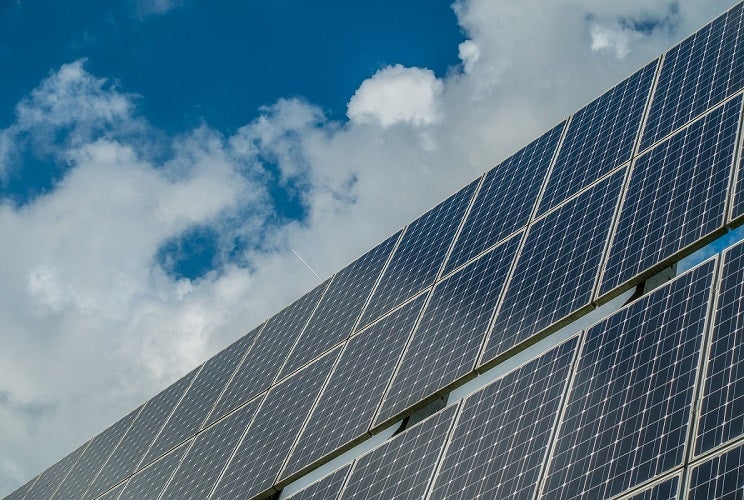 Team offers $c1.29/kWh for 2GW Sadawi solar IPP project
Team offers $c1.29/kWh for 2GW Sadawi solar IPP project21 October 2024
-
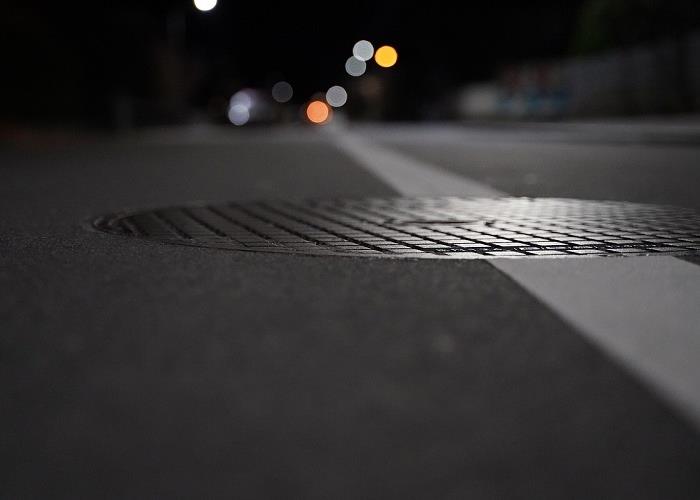 Ashghal tenders sewerage works
Ashghal tenders sewerage works21 October 2024
-
 Saudi Arabia to award 10.9GW of generation capacity
Saudi Arabia to award 10.9GW of generation capacity21 October 2024
-
 Khazna expects to build more 100MW-scale data centres
Khazna expects to build more 100MW-scale data centres21 October 2024
-
 Dubai Municipality seeks Tasreef partner
Dubai Municipality seeks Tasreef partner18 October 2024
All of this is only 1% of what MEED.com has to offer
Subscribe now and unlock all the 153,671 articles on MEED.com

-
Digital Subscription
$175/monthPaid Annually
-
MEED.com
Unlimited access to 20 year archive on desktop and mobile
-
Video Content
All the latest news and analysis in a convenient video format
-
Daily/Weekly Newsletters
Receive your choice of sector and country newsletters at your preferred frequency
-
MEED.com
-
Premium Subscription
$291/monthPaid Annually
-
MEED.com
Unlimited access to 20 year archive on desktop and mobile
-
Video Content
All the latest news and analysis in a convenient video format
-
Daily/Weekly Newsletters
Receive your choice of sector and country newsletters at your preferred frequency
-
MEED Premium Datasets
Access five interactive datasets and conduct your own research into market trends, deals and companies
-
MEED Bussiness Review Magazine
Get our unique, forward looking commentary and analysis delivered to your desktop
-
Regular Subscriber Briefings
Network with industry leaders and fellow colleagues in an informal setting
-
Account Manager/Training
A dedicated account manager for all your requests and enquiries to make the most the platform
-
MEED.com
